21 Slack Tips and Best Practices You Haven't Seen Before
20 tips and best practices for taming the chaos of Slack. Find out about features you never knew existed.


Slack has become a vital inbox for so many of us, but it can be hard to keep up. It's too easy to get overwhelmed, or to lose important work across your channels. This post will give you tips and tricks to make sure you are avoiding the pitfalls of chat and truly maximizing Slack.
Best practices
Use Saved Items as your to-do list
It's tempting to use a combination of marking unread or setting reminders for messages you need to take action on. But they're both flawed:
- Marking unread: now you don't get to use the channel. When new stuff comes in, you either don't open it for fear of losing your unread message, or you have to read the new stuff and then remember to scroll up and mark unread again. It's frustrating.
- Setting reminders: you can click on the "..." on a message and set a reminder about it, so that Slack will notify you in the future with a link to get back to the message. The problem is, it basically disappears in the meantime, so you have place where you can see your to-do list of things you set reminders on. Then the reminder will buzz, but it won't be a great time to work on it, so you'll snooze the reminder, and it disappears all over again. And if you forget to snooze the reminder, you'll lose the unread notification in Slackbot!
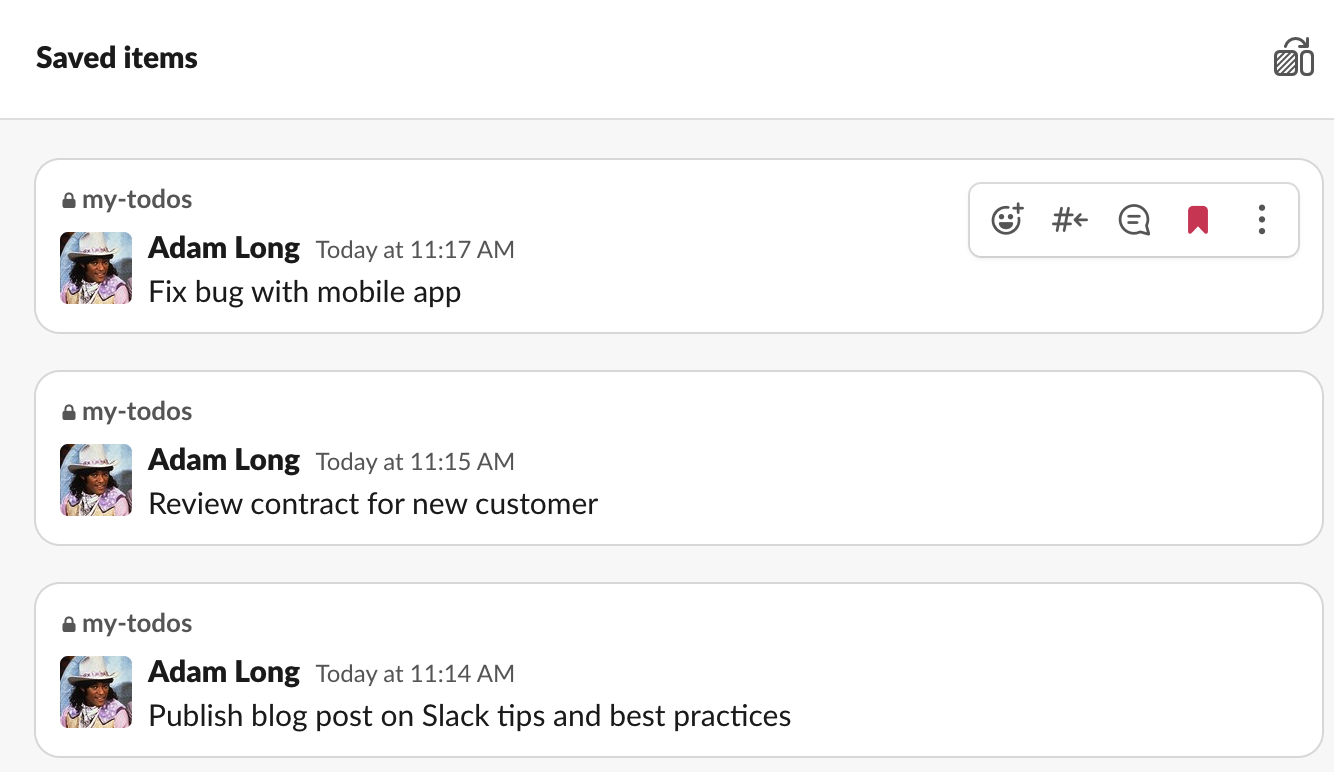
Instead, you can use "Saved Items" as your to-do list. On a message, click the "..." button and then the bookmark icon ("Add to saved items"). That will add it to the Saved Items list, in the top left of your channel menu. Saved items is great, because it will show you messages across all channels that you've saved. You can simply unsave them when you're done with the task.
Learn when to use private channels and when to use Group DMs
Group DMs are too hard to find later because you have to remember exactly who the members were. You'll inevitably forget someone you didn't expect to be invited.
Instead, you should make a named private channel. You're creating the group DM to talk about a particular subject (a customer, project, etc.), so a channel gives you a friendly name you can use to find it later. No, it won't get cluttered — see the next best practice.
Leave channels and archive aggressively
Managing the overwhelming volume of Slack is the key to using it correctly. Just like you set up filters in email, you need to take steps to reduce noise in Slack.
Leave channels you don't need to actively follow so they won't show up in your sidebar any time there's a new message. If people need you there, they'll @-mention you to bring you back. You can always drop by to read the channel if you are curious later on.
Likewise, aggressively archive single-use channels. Once the project is done, or the customer signed, pluck the weeds before they take over the garden. You can always look back at archived channels, or reopen them if discussion needs to start again — they're not deleted by Slack.
Thread at all times, even on your own messages
A lot of why Slack gets overwhelming is that separate topics overlap in a channel. The other discussions pop up in between, and the conversation breaks down. Threads are the antidote, keeping the clutter contained like a good foldering system.
Here's a tip to encourage good behavior and your own sanity when you post to a big channel: start threads on your own messages. Treat it like people do Twitter threads, where the first message is an advertisement for what's to come in the thread: "Some thoughts on how we could reduce costs on Project A", with a threaded reply where you have the actual details.

Use Posts for longer-form thought
Like threading, Slack's built-in Posts are another way to prevent sprawl in a busy channel. If you've never used them, Posts are documents that you can compose in Slack and attach to a message, so no one has to leave to go to Google Docs or Notion to see longer-form thoughts.
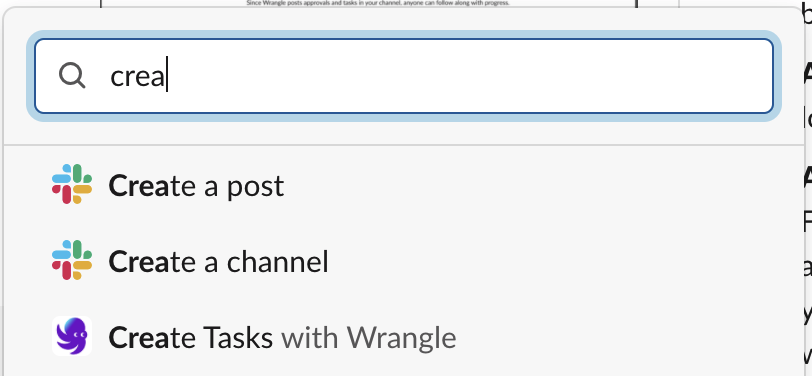
They're a bit hidden these days, but you can find them from the Shortcuts menu (the ⚡️ icon in the reply box, or just type "/" in the reply box). Search for "Create a Post" and click to start writing.
@here over @channel, sparingly
Please don't @channel unless it's a critical announcement no one can miss. Remember that other colleagues will be in other time zones, so you don't want to trigger unnecessary notifications to them. If you just need some urgent attention or help, use @here — it's the same thing, but it won't send notifications to people who don't currently have Slack open.
Improve productivity during work hours with Slack’s Do Not Disturb (DND)
Work can get overwhelming, and so does the numerous requests from colleagues. The DND feature help improves productivity at work by allowing you to set specific uninterrupted hours to reduce distractions and manage your time during work hours. This way, you can focus on clearing and attending to daily tasks without numerous notifications, messages, or calls.
When you turn on the DND, your Slack status changes to indicate you are unavailable to your colleagues. You can also sync it with your calendar, so colleagues know you’re in a meeting or outside work hours. This way, you have a better work-life balance.
It is important to know that in case of urgency or a situation where an immediate response, DND can be bypassed and overridden. However, it is important to respect colleagues’ DND, except if the situation calls for otherwise.
Use Wrangle for shared approvals and tasks
Most of Slack's productivity is based on working with others though, so Saved Items and reminders don't work for collaboration.
We built Wrangle to add shared task checklists and approvals to your Slack channels. Wrangle is a Slack app you can install in your workspace.
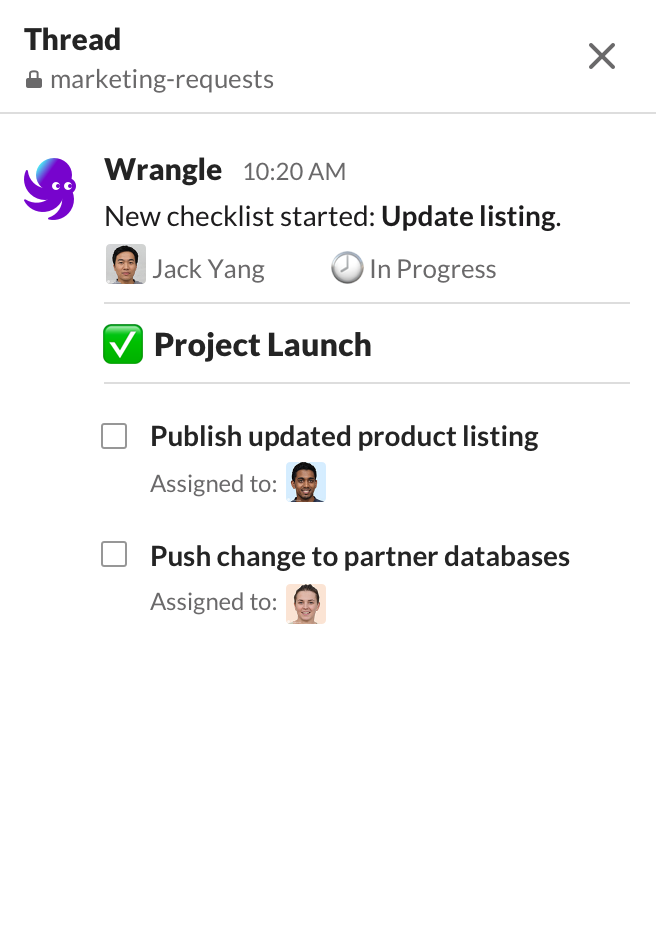
The coolest part of Wrangle is that you can use it to manage and automate requests in a channel. It's like your team's built-in help desk. When another team needs help with something, they click on a shortcut in your channel and you can route approvals or tasks to people. The automated approvals and tasks get posted to the channel, so everyone can track progress.
Useful tips and features you haven't seen
Use the history buttons to see where you just accidentally left
Whoops, you switched channels but realize you need to get back to a discussion you were just having...but...where were you?

Slack has a back button and a history button(!) that you can use to get back to where you've been. You can also use keyboard shortcuts to get back: Cmd + [ on Mac, Alt + ← on Windows.

The history menu shows all the places you've been (across all workspaces!).
Use the file browser to find images or files shared across any channel
Want to find that document or image you just saw, but can't remember where it was? The Slack File Browser is your savior. It's located in the top left of the channel menu, and you may have to click the "... More" menu to see it:

The File Browser shows every image or file shared in your Workspace (that you have permission to see). By default, you may only see your items. To change that, click on the filters menu in the top right of the file browser, where you can optionally filter by channel or by who shared the item.
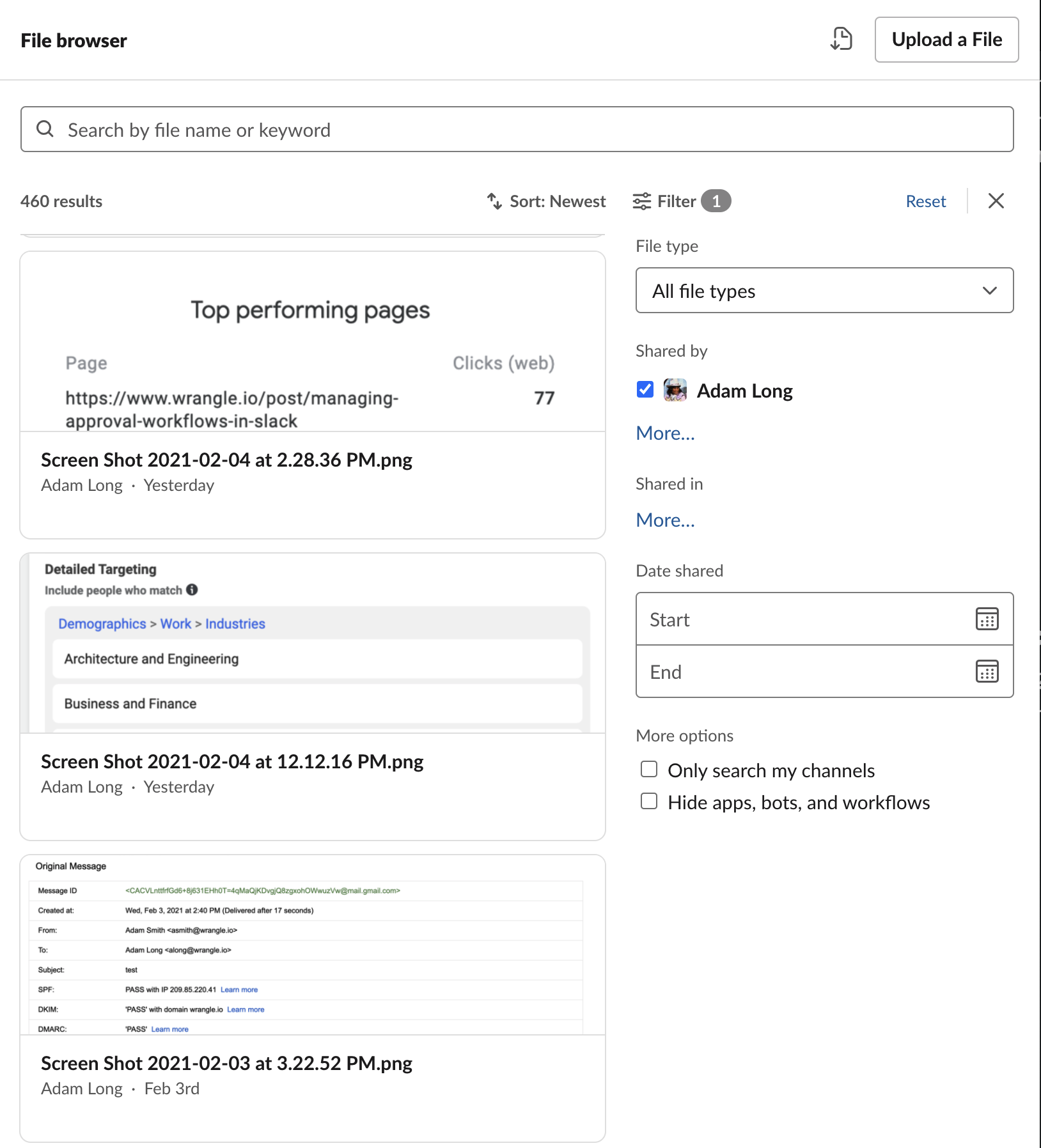
Press up to quickly edit your last message
The French have an expression, espirit de l'escalier, for when you think of a witty retort after the opportunity has passed. I have the same problem when I submit a Slack message — I immediately see something wrong, like a typo.
Never fear: you can just press the up arrow on the keyboard and you'll instantly be editing it. No need for your mouse.
Option + click to mark unread
While we have reservations about over-reliance on marking unread (see the best practices around Saved Items above), it's still a useful feature. You can quickly mark a channel unread, starting at a certain message by holding Option (on Mac) or Alt (on PC) and clicking on the message.
Use the Quick Switcher to jump between channels
Stop clicking on channels. It takes forever. Use your keyboard.
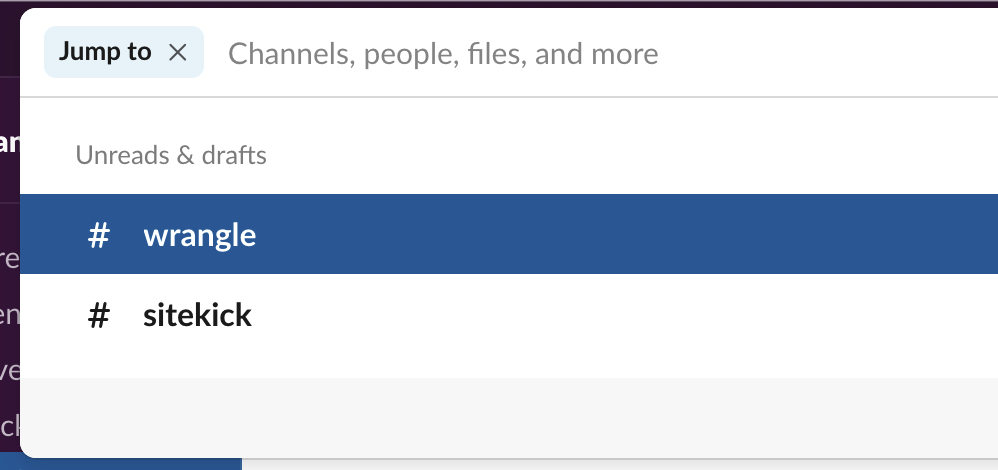
Press Cmd + K (Mac) / Ctrl + K (PC) to open the Quick Switcher, and type a few letters to filter for the channel you want, then press Enter to jump there. By default your unread channels will appear at the top of the list.
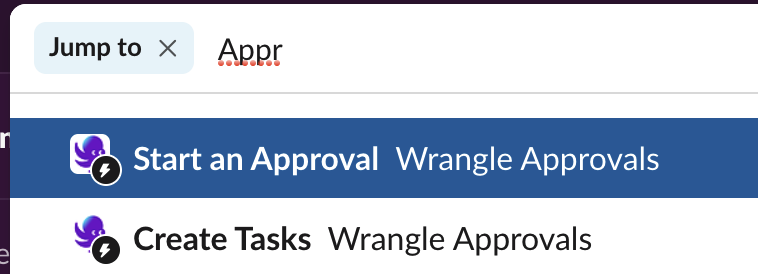
The Quick Switcher now also includes Shortcuts, so you can start workflows or use actions from apps like Wrangle.
Use keyboard shortcuts
While we're on the subject, there are lots of useful keyboard shortcuts you should learn. Here are the best ones:
- Open the list of keyboard shortcuts with Cmd + / (Mac) or Ctrl + / (PC).
- Jump between unread channels in your channel list: Option + Shift + Up, Option + Shift + Down (Alt + Shift + arrows on PC).
- Press Escape to mark all messages in the current channel as read
- Cmd/Ctrl + B to bold text, Cmd/Ctrl + I to make it italics, Shift + Enter to add a linebreak in your message
- To quickly switch between your Slack Workspaces, hold down Command on Mac or Control on PC — you'll see numbers show up on top of each Workspace (see below). While continuing to hold Cmd/Ctrl, press the number of the Workspace you want to go to.

Use Slack Workflow Builder to automate your channels
Slack's Workflow Builder is the most powerful feature you're probably not using. It's a way to automate actions in your channels, so you can use it for removing tedium from things your team does repeatedly.
For example, you can automatically greet new people that join a channel and send them info on what to do in the channel. Or, you can put up a form for them to fill out, and send the results to the channel.
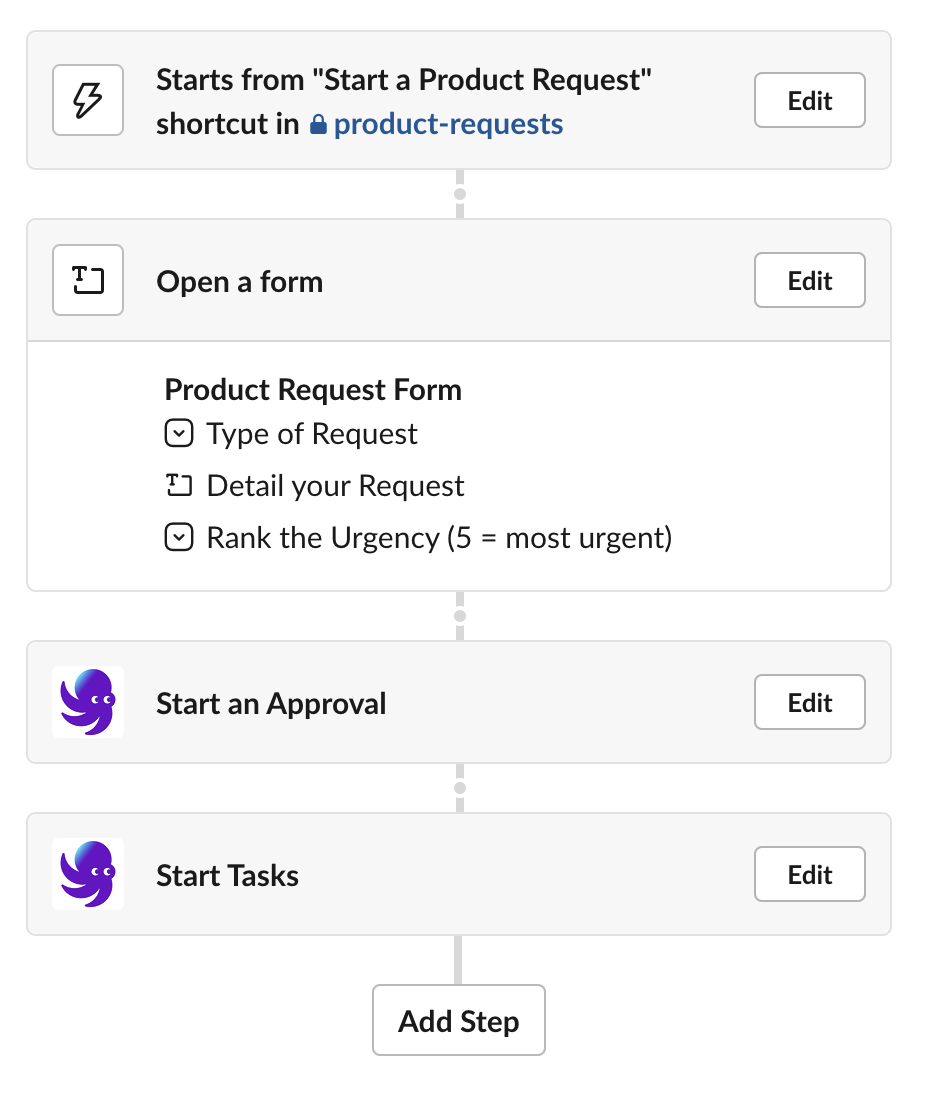
We've integrated Wrangle with Workflow Builder, so you can manage requests and tickets. When another team needs help with something, they click on a shortcut in your channel and you can route approvals or tasks to people. The automated approvals and tasks get posted to the channel, so everyone can track progress.
Use sections and starred channels to organize the channel list
The left side of Slack can get overwhelming, but there are several useful features to help.
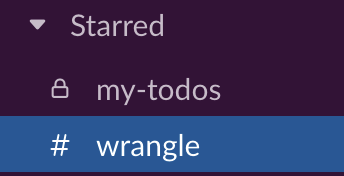
Starred Channels are used for your most-used channels. You can star a channel by going to the channel and clicking the Star icon next to its name at the top of the page. By adding to the Starred Channels list, you avoid having to scroll up and down a big list of channels to find it.
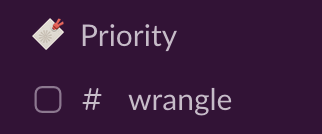
Custom channel sections allow you to create folders of channels, rather than having them all be in the big "Channels" list. You give a channel section a useful name and then you can drag channels there. To create a channel section, hover over "Channels" in your left sidebar and click "Create new section."
Use keyword highlighting to find mentions of things you care about
You're probably familiar with Slack notifying you any time you get tagged in a message. But you can also have Slack notify you in the same way for key words or phrases you care about. For example, if you're managing a project or a customer, you can get alerted any time someone says the name of the project/customer — in any channel.
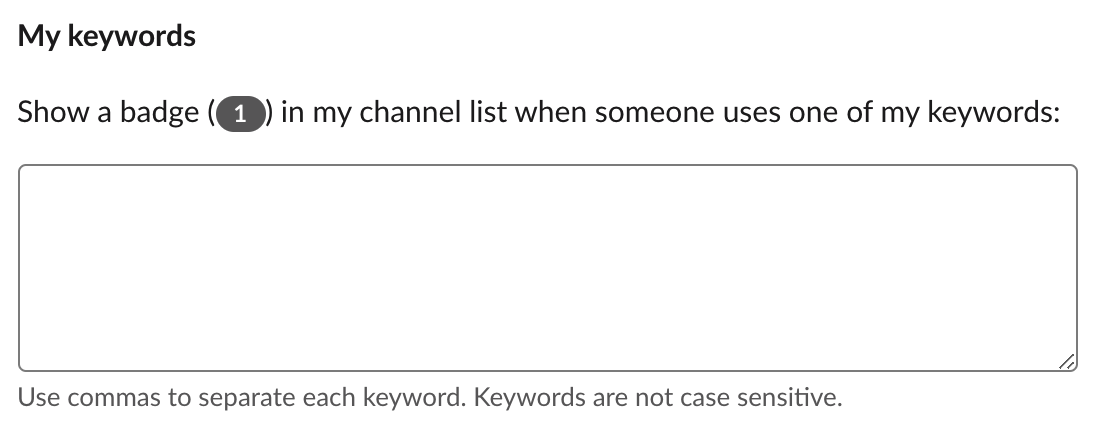
To set up keyword highlighting, click on the name of your Workspace at the top left of Slack, and click on "Preferences." There, you'll see a section called "My keywords," where you can specify the words or phrases you want notifications for.
Mute your desktop notifications when sharing your screen or presenting
We've all had an awkward notification show up on screen while we're presenting to colleagues, whether from Slack or a text message from your spouse. Avoid the cringe by temporarily disabling notifications. On Mac, you can click the icon in the very top right of the menu bar to open the Notifications pane. Then scroll up to reveal hidden controls, and turn on Do Not Disturb. That will block desktop notifications until you're done sharing your screen. You can also turn on Do Not Disturb (but only for Slack notifications) by clicking on your profile picture in the top right of Slack and choosing "Pause notifications."

To copy link to a message, right click on the timestamp
If you want to share a message from one channel with another person or channel, you can hover the message and click on the "Share" button.
If you want a link to the message, you can right click on the time next to the person's name that posted the message, and choose "Copy link." You can paste the link wherever you want.
Use number emoji for voting on options
If you want to do a quick poll of your colleagues, type out a message and number the options. Then react to your message using the number emoji for each option. That way, your colleagues can just click the emoji reaction to put in their vote:
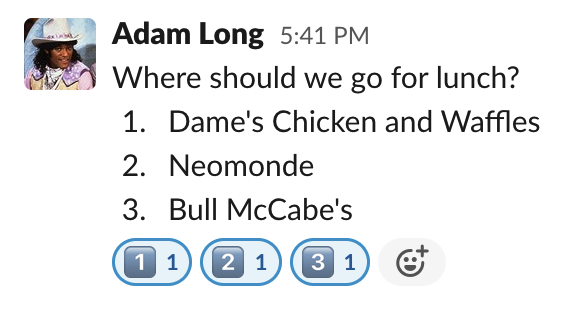
Use Pinned Items to keep important accessible in a channel
In your channel, you may want to keep important links or informations readily available to people. For example, you might have a spreadsheet that your team often needs and you want to make it easy for people to find that link any time they need it (or if you want to make sure new employees can find it).
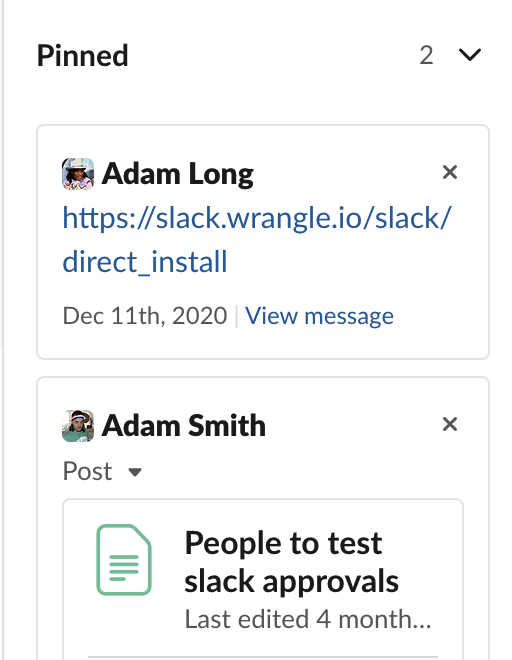
To handle this, you can use Slack's Pinned Items feature. Pinned Items will save any message you choose, pinning into a list in the channel. To pin a message, hover over it and click the "..." menu, then choose "Pin to channel." To view Pinned Items, you click the "Show Channel Details" icon (the ℹ️ icon in the top right).

- Try Wrangle free for 14 days
- Turn messages into trackable tickets
- Build a scalable help desk


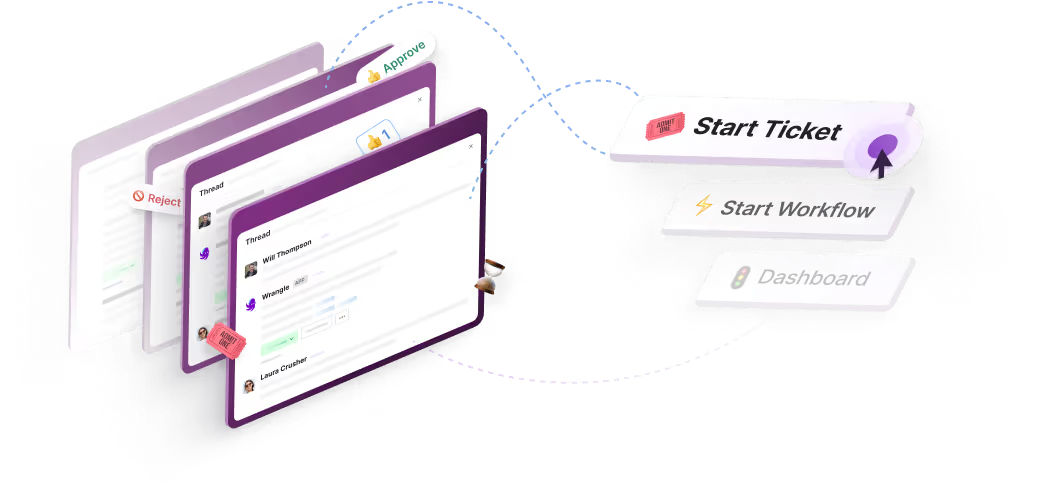
Turn Slack into a productivity powerhouse with Wrangle
Create a scalable helpdesk in Slack. Automatically turn messages into trackable tickets and provide faster, more transparent service to your colleagues and customers with Wrangle — Try it free!






